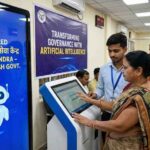In recent years, the implementation of safety drills in Indian schools has sparked a contentious debate. While some argue that these drills are essential for preparing students and staff for potential emergencies, others contend that they may cause unnecessary anxiety and fear among young students. This controversy touches on deeper issues regarding the balance between safety and emotional well-being in educational environments across India.
The Case for Safety Drills
Proactive Measures for Unpredictable Threats:
- Advocates for safety drills argue that with the increasing frequency of natural disasters like earthquakes and floods, especially in disaster-prone areas such as the Himalayan region and coastal zones, it is critical that schools are prepared. Drills that simulate these scenarios can ensure that both students and staff know how to respond swiftly and effectively, potentially saving lives.
Learning from Global Best Practices:
- Proponents also point to international standards, noting that countries with stringent safety protocols in schools tend to have lower casualty rates during actual emergencies. They argue that India must adopt similar rigorous safety measures to protect its young citizens.
Building a Culture of Preparedness:
- Supporters believe that regular drills help inculcate a culture of preparedness and can demystify the processes involved during actual emergencies, reducing panic and chaos. They argue that these drills should be seen as a necessary part of school safety, much like fire drills, which have long been a routine practice across schools globally.
The Case Against Safety Drills
Potential Psychological Impact:
- Critics argue that the regular occurrence of safety drills, especially those simulating violent scenarios like school shootings—events that are extremely rare in India—can instill fear and anxiety among students. They contend that the psychological impact of such drills has not been adequately considered and that the fear they instill may outweigh their potential benefits.
Lack of Tailored Approaches:
- There is also a concern that drills are often a one-size-fits-all solution that may not be suitable for all schools or age groups. Critics say that drills need to be carefully planned with the emotional and developmental stages of the students in mind, which is often overlooked in the current implementations.
Diversion of Educational Resources:
- Some educators and parents express concern that the focus on extensive safety drills diverts attention and resources away from educational activities. They argue that the time spent on drills could be better utilized in enhancing academic learning and other beneficial school activities.
Navigating the Controversy
Seeking a Balanced Approach:
- The debate suggests a need for a balanced approach that considers both the physical safety and psychological well-being of students. Schools might need to develop customized safety protocols that address specific threats relevant to their geographical and social context, rather than adopting overly aggressive and generic drill practices.
Government and Policy Maker Involvement:
- There is a call for more robust guidelines from the Indian government and educational authorities to help schools navigate the complexities of implementing safety drills. Clear policies that outline not just the how and when of safety drills but also emphasize the importance of psychological safety are needed.
Community Engagement:
- Finally, engaging parents and the broader school community in discussions about safety protocols is crucial. Transparency about the nature and frequency of drills, as well as open communication about the rationale behind them, can help alleviate concerns and ensure that the school community is united in their approach to safety.
Conclusion: Striking the Right Balance
As the debate continues, it is clear that while the intention behind implementing safety drills in schools is to protect students, the approach must be thoughtful and nuanced. Ensuring the safety of students in schools is of utmost importance, but it should not come at the cost of their emotional well-being. Finding a middle ground that respects the concerns of all stakeholders—students, parents, educators, and policymakers—is essential for moving forward in a manner that truly safeguards the future of India’s young learners.














